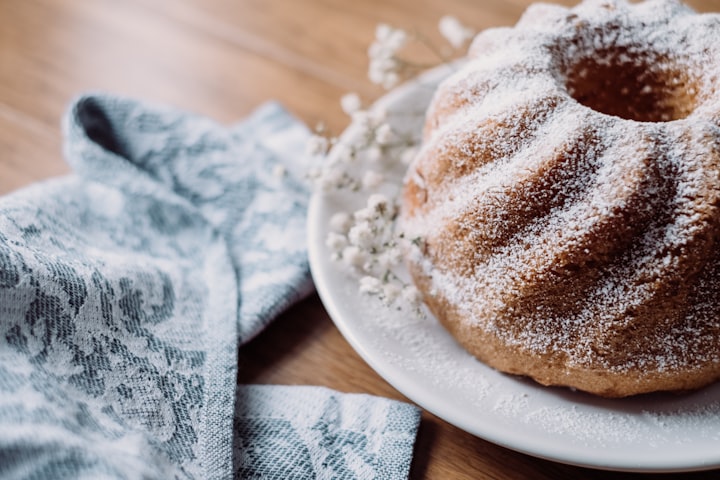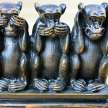A Cake Baking Adventure: Mastering Measurements for the Perfect Bake
Conquer the Art of Cake Baking: Master Precise Measurements, Perfect Mixing Techniques, and Delightful Decorating for a Show-Stopping Treat

Baking a cake is an art that combines precise measurements, quality ingredients, and a bit of creativity to create a delectable treat that everyone will enjoy. Whether you're a seasoned baker or just starting out, knowing the correct way to measure your ingredients is essential for a successful bake. In this blog, we'll take you on a cake baking adventure and help you master the art of measuring ingredients.
Choosing the Right Recipe
First, you'll need to select a cake recipe that suits your preferences and skill level. There are countless recipes available online, in cookbooks, or from family and friends. Keep in mind that some recipes use ounces, while others use cups, so be prepared to convert measurements if necessary. As a reference, if you're using a US cup, 1 cup is equal to 8 fluid ounces.
Gathering Your Ingredients and Tools
Once you have your recipe in hand, it's time to gather all the necessary ingredients and tools. Some essential cake-baking tools include:
- Measuring cups and spoons
- Mixing bowls
- Electric mixer or whisk
- Rubber spatula
- Cake pan
- Cooling rack
- Sifter (optional)
As for ingredients, common cake components include:
- Flour
- Baking powder and/or baking soda
- Salt
- Sugar
- Eggs
- Butter or oil
- Milk or buttermilk
- Vanilla extract
Make sure to read your recipe carefully and gather any additional ingredients it may call for.
Measuring Your Ingredients
- Properly measuring your ingredients is critical to the success of your cake. Depending on the recipe, you may need to convert ounces to cups, or vice versa. Here are some tips to help you measure your ingredients accurately:
- Always use the correct measuring tools. Use measuring cups for dry ingredients and liquid measuring cups for wet ingredients. For smaller measurements, use measuring spoons.
- Level off your dry ingredients. When measuring dry ingredients, use a knife or the back of a spoon to level off the top of the measuring cup for a precise amount.
- Pack brown sugar. When measuring brown sugar, pack it firmly into the measuring cup so it holds its shape when removed.
- Sift powdered ingredients. If your recipe calls for powdered ingredients like cocoa or powdered sugar, sift them to remove any lumps and ensure a smooth texture.
Mixing and Baking
Now that you have your ingredients measured, it's time to start mixing and baking your cake. Here are some basic steps to follow:
- Preheat your oven to the temperature indicated in the recipe.
- Grease your cake pan and line it with parchment paper, if necessary.
- In a large bowl, whisk together the dry ingredients (flour, baking powder, baking soda, and salt).
- In a separate bowl, cream together the butter and sugar using an electric mixer or whisk. Add the eggs one at a time, mixing well after each addition. Stir in the vanilla extract.
- Alternate adding the dry ingredients and milk to the butter mixture, starting and ending with the dry ingredients. Mix until just combined – do not overmix.
- Pour the batter into the prepared cake pan and smooth the top with a spatula.
- Bake the cake in the preheated oven for the time specified in the recipe, or until a toothpick inserted into the center comes out clean.
- Allow the cake to cool in the pan for about 10 minutes before transferring it to a wire cooling rack to cool completely.
Frosting and Decorating
Once your cake has cooled, it's time to frost and decorate. You can choose a frosting that complements your cake flavor or get creative with different colors and textures. Some popular frosting options include:
- Buttercream frosting
- Cream cheese frosting
- Ganache
- Whipped cream
- Fondant
To frost your cake, follow these steps:
- If your cake has a dome, trim the top with a serrated knife to create a flat surface.
- Place a dollop of frosting on a cake board or serving plate to anchor the cake.
- Place the cake on the frosting dollop and apply a thin layer of frosting, called a crumb coat, to seal in any crumbs.
- Chill the cake in the refrigerator for about 30 minutes to set the crumb coat.
- Apply a thicker layer of frosting to the top and sides of the cake, smoothing it out with a spatula or an offset spatula.
- Decorate your cake with additional frosting, edible decorations, or fresh fruit, as desired.
Conclusion
Baking a cake is a rewarding experience that allows you to express your creativity and enjoy a delicious homemade treat. By mastering the art of measuring ingredients, following a reliable recipe, and practicing your mixing and decorating skills, you'll be well on your way to becoming a cake baking pro. Remember to always double-check your measurements. Happy baking!






Comments
There are no comments for this story
Be the first to respond and start the conversation.